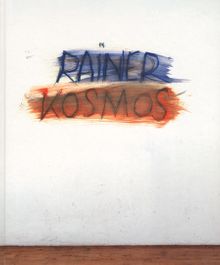| |||||||||||||||||||||||||
ARTIST MONOGRAPHS
|
|
STATUS: Out of print | 00/00/00 For assistance locating a copy, please see our list of recommended out of print specialists |
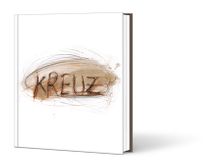 Arnulf Rainer: Cross
Arnulf Rainer: Cross
The Cross Can Convey The Meaning
Published by DuMont.
Text by Rienhold Baumstark.
PUBLISHER
DuMont
BOOK FORMAT
Hardcover, 9.5 x 11.75 in. / 184 pgs / 70 color / 5 bw.
PUBLISHING STATUS
Pub Date 2/28/2011
Active
DISTRIBUTION
D.A.P. Exclusive
Catalog: SPRING 2011 p. 143
PRODUCT DETAILS
ISBN 9783832193355 TRADE
List Price: $59.95 CAD $79.00
AVAILABILITY
In stock
in stock $59.95 Free Shipping UPS GROUND IN THE CONTINENTAL U.S. |
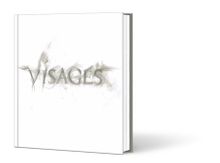 Arnulf Rainer: Visages
Arnulf Rainer: Visages
Published by DuMont.
Text by Jean-Michel Foray, Arnulf Rainer.
PUBLISHER
DuMont
BOOK FORMAT
Hardcover, 9.5 x 11.5 in. / 132 pgs / 74 color / 1 bw.
PUBLISHING STATUS
Pub Date 8/31/2011
Out of print
DISTRIBUTION
D.A.P. Exclusive
Catalog: FALL 2011 p. 143
PRODUCT DETAILS
ISBN 9783832193706 TRADE
List Price: $59.95 CAD $79.00
AVAILABILITY
Not available
STATUS: Out of print | 00/00/00 For assistance locating a copy, please see our list of recommended out of print specialists |
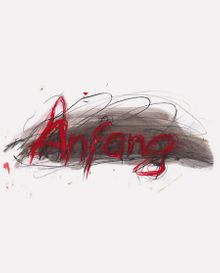 Arnulf Rainer: The Beginning is Always the Hardest
Arnulf Rainer: The Beginning is Always the Hardest
Early Works 1949-1961
Published by DuMont.
PUBLISHER
DuMont
BOOK FORMAT
Hardcover, 9.5 x 11.5 in. / 212 pgs / 103 color / 9 bw.
PUBLISHING STATUS
Pub Date 2/28/2010
Out of print
DISTRIBUTION
D.A.P. Exclusive
Catalog: SPRING 2010 p. 135
PRODUCT DETAILS
ISBN 9783832192624 TRADE
List Price: $59.95 CAD $70.00
AVAILABILITY
Not available
STATUS: Out of print | 12/1/2010 For assistance locating a copy, please see our list of recommended out of print specialists |
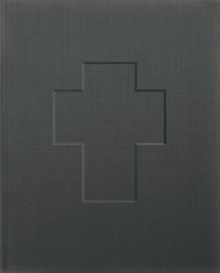 Arnulf Rainer: Cross 1956-2009
Arnulf Rainer: Cross 1956-2009
Published by Verlag für moderne Kunst.
Text by Friedhelm Mennekes, Rainer Michael Mason, Arnulf Rainer.
PUBLISHER
Verlag für moderne Kunst
BOOK FORMAT
Clth, 10.25 x 12.75 in. / 216 pgs / 168 color.
PUBLISHING STATUS
Pub Date 12/31/2010
Active
DISTRIBUTION
D.A.P. Exclusive
Catalog: FALL 2010 p. 160
PRODUCT DETAILS
ISBN 9783869840000 TRADE
List Price: $130.00 CAD $175.00
AVAILABILITY
In stock
in stock $130.00 Free Shipping UPS GROUND IN THE CONTINENTAL U.S. |
 Arnulf Rainer: Photographs
Arnulf Rainer: Photographs
Published by Hatje Cantz.
Edited by Karl Pfefferle. Essay by Robert Fleck.
PUBLISHER
Hatje Cantz
BOOK FORMAT
Hardcover, 11.75 x 10.75 in. / 136 pgs / 140 color.
PUBLISHING STATUS
Pub Date 3/1/2006
Out of print
DISTRIBUTION
D.A.P. Exclusive
Catalog: SPRING 2006 p. 83
PRODUCT DETAILS
ISBN 9783775717359 TRADE
List Price: $40.00 CAD $50.00
AVAILABILITY
Not available
STATUS: Out of print | 5/18/2011 For assistance locating a copy, please see our list of recommended out of print specialists |
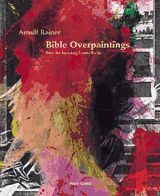 Arnulf Rainer: Bible Overpaintings
Arnulf Rainer: Bible Overpaintings
From the Sammlung Frieder Burda
Published by Hatje Cantz.
Edited by Helmut Friedel. Essay by Friedhelm Mennekes.
PUBLISHER
Hatje Cantz
BOOK FORMAT
Hardcover, 9.5 x 11.75 in. / 364 pgs / 160 color / 1 bw
PUBLISHING STATUS
Pub Date 2/2/2001
Out of print
DISTRIBUTION
D.A.P. Exclusive
Catalog: SPRING 2001
PRODUCT DETAILS
ISBN 9783775709712 TRADE
List Price: $60.00 CAD $70.00
AVAILABILITY
Not available
STATUS: Out of print | 4/24/2004 For assistance locating a copy, please see our list of recommended out of print specialists |
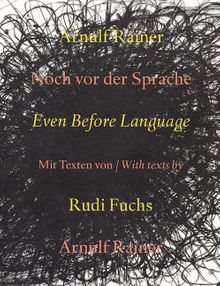 Arnulf Rainer
Arnulf Rainer
Even Before Language
Published by nai010 publishers/Stedelijk Museum, Amsterdam.
Photographs by Arnulf Rainer. Contributions by Rudi Fuchs.
PUBLISHER
nai010 publishers/Stedelijk Museum, Amsterdam
BOOK FORMAT
Paperback, 12 x 9.64 in. / 196 pgs / 84 color
PUBLISHING STATUS
Pub Date 9/2/2000
Out of print
DISTRIBUTION
D.A.P. Exclusive
Catalog: FALL 2000
PRODUCT DETAILS
ISBN 9789056621605 TRADE
List Price: $39.95 CAD $50.00
AVAILABILITY
Not available
STATUS: Out of print | 6/1/2001 For assistance locating a copy, please see our list of recommended out of print specialists |
